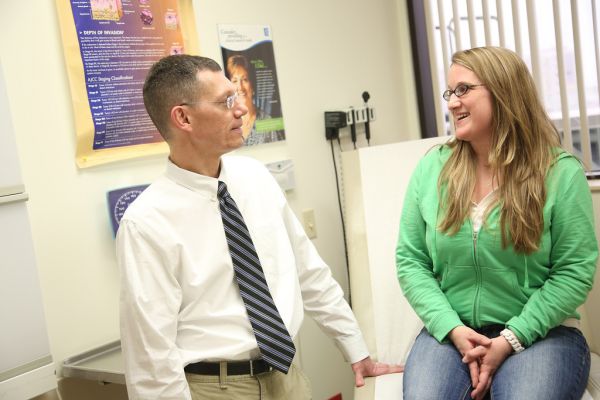Sarcoma is a rare cancer — accounting for just 1% of adult cancers — and it arises from the tissues that “glue” the body together — bone, muscle, fat, tendons, blood vessels, lymph vessels, nerves and joint tissue. If you or a loved one is diagnosed with a sarcoma, it’s important to understand what makes it different from the majority of cancers.
What is soft tissue sarcoma?
There are roughly 50 to 70 different types of sarcomas. In general, sarcomas form in the soft tissue, such as muscle, bone, fat, connective tissue or tendons. There is some evidence that sarcomas start out in stem cells as well. The incidence rate of sarcomas is significantly lower than other types of cancer. Fewer than 13,000 sarcomas will be diagnosed in the United States this year.
Never miss another Cancer Talk blog!
Sign up to receive our monthly Cancer Talk e-newsletter.
Sign up!What causes soft tissue sarcoma?
Usually, sarcomas form when something outside of the body, such as radiation, causes a mutation in the soft tissue cell. There are types of sarcomas that tend to grow at the edge of the area where radiation was given as treatment for a different kind of cancer. Overexposure to certain chemicals can also cause mutations in soft tissue cells. For example, gardeners and landscapers who work with herbicides or pesticides and veterans of the Vietnam War who were exposed to Agent Orange may be at a higher risk for sarcoma.
However, the majority of sarcoma cases are just bad luck. Inside a soft tissue cell, genes are being turned on and off to control the cell’s regular functions. It’s believed that most sarcomas are a result of a dormant gene being activated that was never meant to be turned on in the life of the cell.
Treatment for soft tissue sarcomas:
Treatment options are different for individual patients, but in cases where the cancer hasn't spread to other areas, a sarcoma may be treated with surgery by merely cutting out the mass.
Sarcomas usually grow as a tumor, but they often have microscopic tentacles growing outside of the mass as well. A surgeon will likely remove an area of normal tissues around the sarcoma to make sure all the cancer has been removed.
In cases where the sarcoma is located near an important organ or on bone tissue, radiation would likely be used to reduce the size of the mass before its removal.
Learn more about soft tissue sarcomas and Roswell Park's multidisciplinary approach to treatment.

